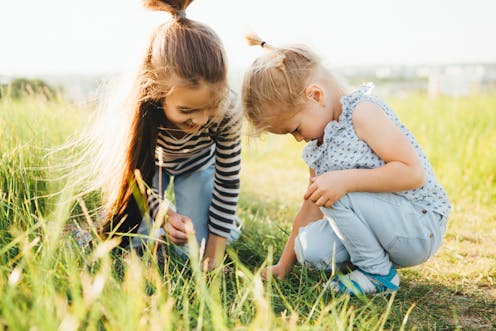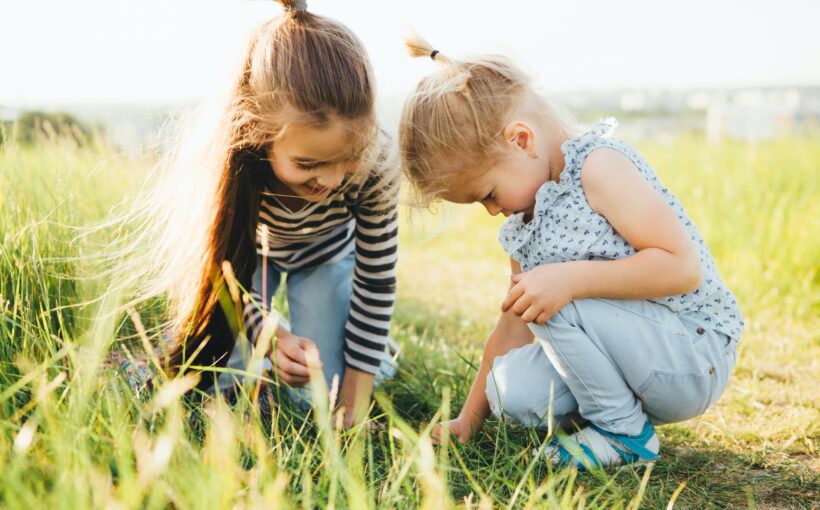
The environment is in crisis. Young people are calling for environmental action and requesting more education about the environment and the climate emergency. They are also looking at what they can do to tackle climate change.
Together with colleagues, I have found that children can make a valuable contribution to research about the environment through citizen science projects – where members of the public help scientists with research.
In one project, we looked at young people’s involvement with iNaturalist, a popular nature app. The young participants, aged between five and 19, used the app independently or during and after attending events organised by the Natural History Museum of London, the Natural History Museum of Los Angeles County and the California Academy of Sciences in San Francisco.
The app lets people upload photos of organisms and add information, such as location, date and time. If this information is added, then the photo is considered “verifiable”.
The verifiable photos that are considered of good quality (as agreed by the iNaturalist community) are labelled as “research grade”. The research-grade contributions are shared with the Global Biodiversity Information Facility, which allows open access to data about all types of life on Earth. This data is frequently used by biodiversity researchers.
Making a contribution
We found that the young people using the app contributed to quality wildlife monitoring at the same rate as adults, with the support of iNaturalist’s online community. Their observations were of research grade and therefore potentially valuable for wildlife research.
What’s more, wildlife can benefit from young volunteers’ contributions. We found that young people tend to observe and identify different species than adults. These tend to be smaller species, such as insects, mushrooms and spiders. Although this may be because of young people’s personal preferences, it may also depend on their different skills, opportunities and available instruments – for example, whether they have high-resolution cameras.
Although people usually take part in citizen science projects because of their broad environmental concerns and concerns for others, they also develop scientific knowledge and skills, such as about the scientific process, and topic-specific knowledge – for example, learning about and collecting data on endangered species – as a result.
We contacted teachers who engage their pupils in citizen science projects. We wanted to understand whether citizen science can also help young people engage in environmental science issues. Teachers confirmed the learning benefits for young people, adding that young people also maintain an ongoing engagement with science once they are involved. A secondary school science teacher said:
I think it is just a different way to do science, to help the students to be more engaged in science. Talk to them about real problems they can see in their everyday life, so it is not about the idea, it is just really a different way to teach science in the classroom.
Another science teacher pointed out the ownership that the young people had over their scientific learning through citizen science:
And then they’ll [the students] be the ones who archive that, they’ll be the ones that then decide amongst each other which ones to look at in detail and try and work out the sequencing relationship between those samples… so it’s all about them making the decisions amongst themselves in that larger [scientific] collaboration.
Learning by doing
Other research I carried out with colleagues confirmed these findings. This study looked at young people’s participation in Zooniverse, a citizen science website.
The website invites volunteers to participate in scientific projects by completing tasks. These may include classifying pictures of animals, transcribing historical wildlife data or annotating animals in camera trap images.
The young scientists reported that they had gained environmental science learning, such as understanding more about their local wildlife population numbers. They felt they were experts, and were recognised as experts by others. They went on to use their science knowledge elsewhere: writing a blog to share their knowledge or going on to study life sciences at university.

However, young people who had an existing interest and experience with science activities were more likely to learn about the environment on Zooniverse. Also, young participants who took part in reflection and discussion activities were more likely to show higher levels of environmental learning compared with those who just completed the tasks.
Teachers said that they could better help young people successfully participate in environmental research if they have access to the right resources.
This includes guidelines and support on how to implement citizen science activities in their classrooms. This support can be in the form of professional development programmes, or tools, such as the nQuire platform, which guides and enables participation in different stages of scientific research.
Young people can help to advance wildlife research and in doing so, help the environment. But to do so, they need to be empowered with the proper knowledge and skills through well-designed educational programmes, and receive the right support from the research community.
![]()
Maria Aristeidou does not work for, consult, own shares in or receive funding from any company or organisation that would benefit from this article, and has disclosed no relevant affiliations beyond their academic appointment.



